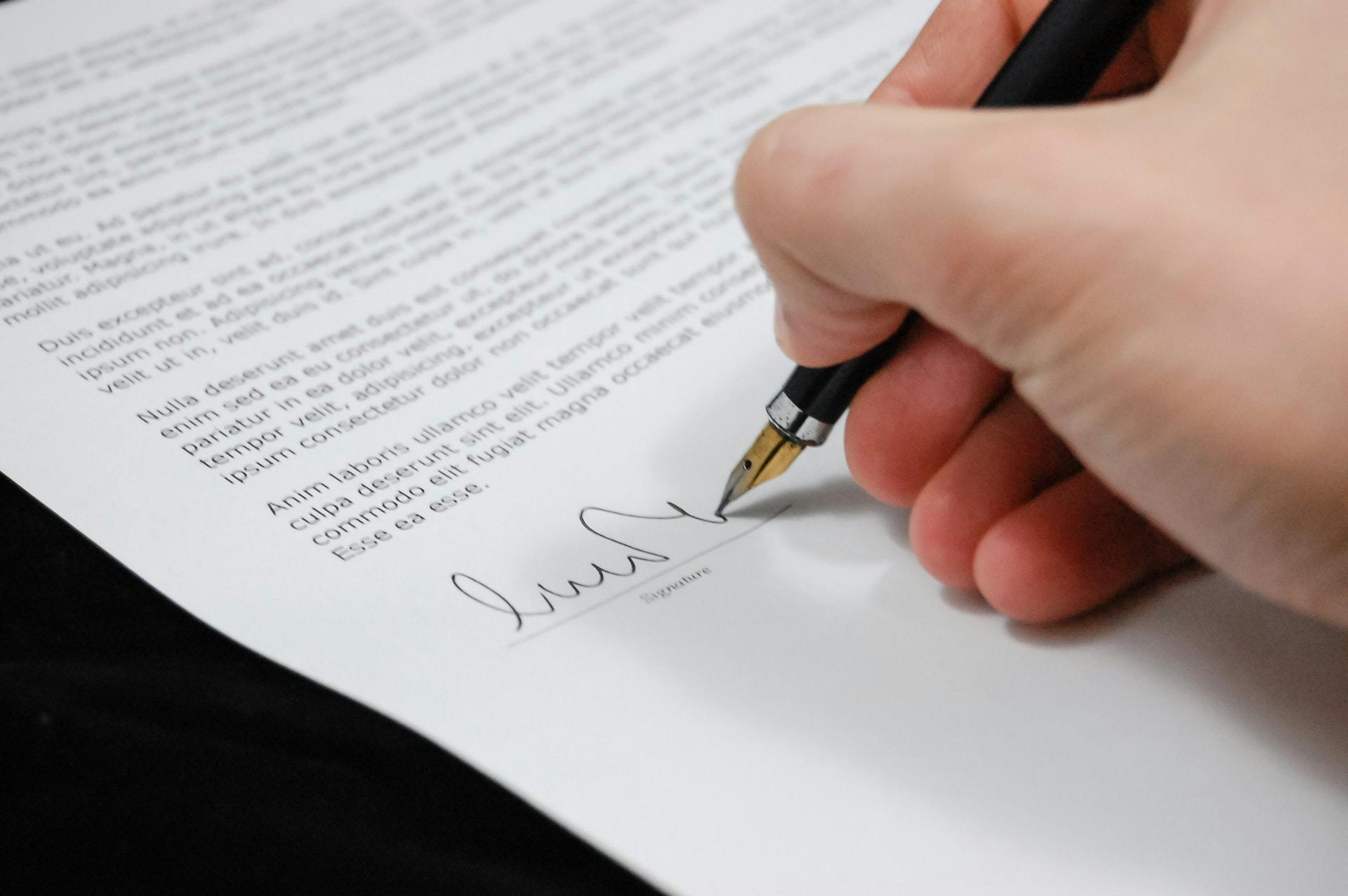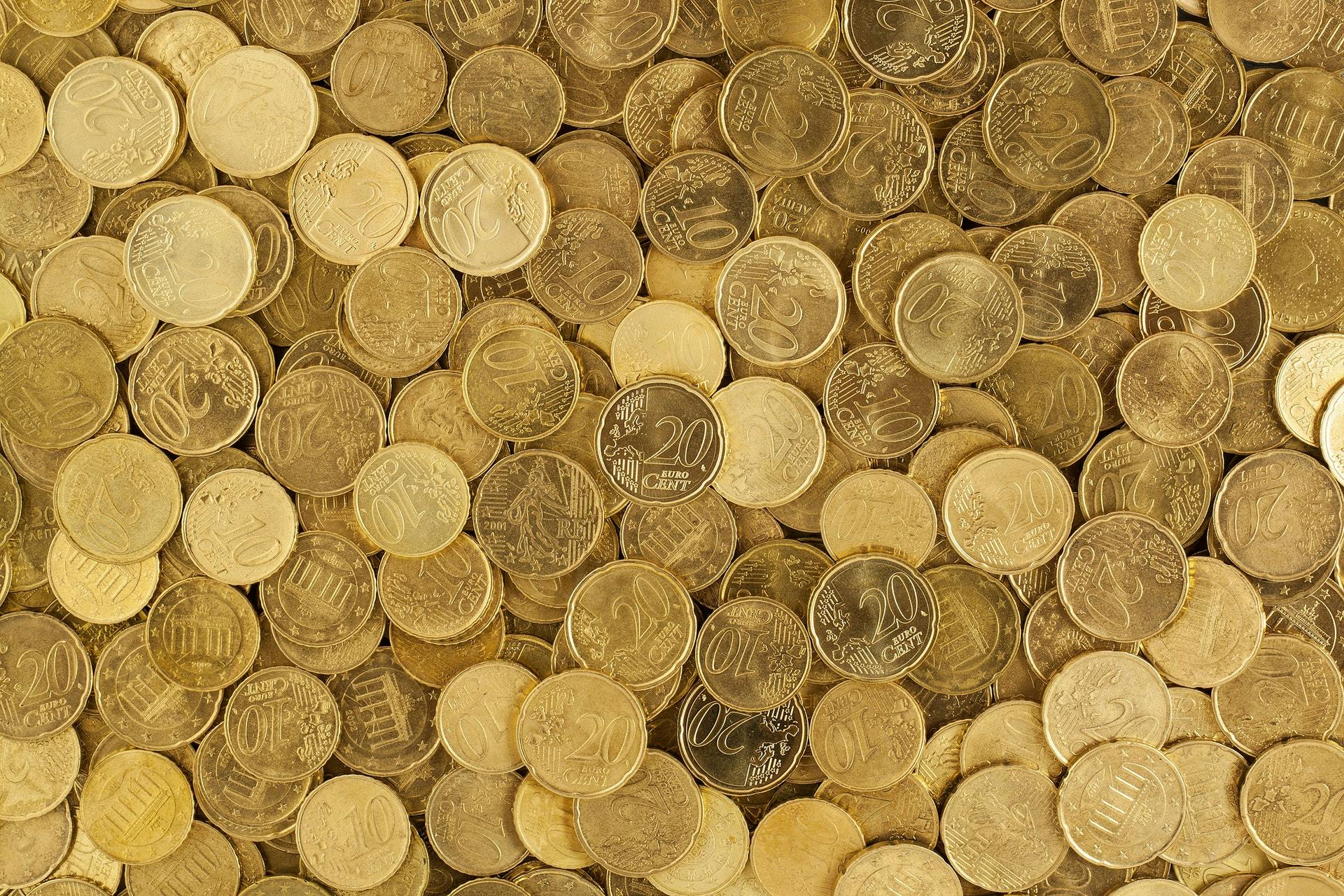Jump to
- Is music copyright automatic?
- How to copyright a song — a 4-step guide
- 1. Fix your song in a tangible form
- 2. Complete the US Copyright Office Application
- 3. Pay the filing fee
- 4. Submit a copy of the work
- How much does it cost to copyright my music?
- Can I copyright my music for free?
- Common mistakes to avoid (and how to avoid them)
- Mistake #1 — Assuming uploading to streaming platforms protects you
- Mistake #2 — Believing in the "Poor Man's Copyright"
- Mistake #3 — Missing the deadline for statutory damages
- Mistake #4 — Overpaying when you could file as a group
- Mistake #5 — Not monitoring where your song earns royalties
- Final thoughts
Behind every royalty check, playlist placement, or sync deal, there’s a copyright at work. Your music is technically protected the moment you record it — but if you want the power to defend that right, earn every dollar you’re owed, and take action if someone uses your work without permission, you need to register your copyright officially.
Whether you’re an independent songwriter, a self-releasing artist, or a publisher managing a catalog, knowing how to protect and monitor your music is one of the smartest moves you can make for your career.
In this guide, you’ll learn how music copyright works in the US, how to register your song step by step, how much it costs in 2025, and how to avoid common mistakes that could cost you money.
Is music copyright automatic?
Yes — but there's a vast difference between having copyright protection and being able to enforce it.
Under the Berne Convention, your song is automatically protected the moment it's "fixed in a tangible medium." This means your music exists in a form that can be perceived and reproduced, like a recording, sheet music, or digital file (Source: US Copyright Office for Musicians).
You don't need to register or use the © symbol for the copyright to exist — that's true in all 181 Berne member countries worldwide. (Source: Am Badar & Partners - Berne Convention).
However, in the US, registration with the Copyright Office isn't just a formality — it gives you the legal right to enforce your copyright in court, including access to federal courts. Without formal registration:
- You can't file an infringement lawsuit
- You can't claim statutory damages or attorney's fees.
- Your options for recovering lost income are minimal.
That's why professional songwriters, labels, and publishers don't stop at automatic protection — they ensure their works are officially registered. In 2024, over 1,200,000 new registrations were made with the US Copyright Office alone (Source: US Copyright Office Annual Report 2024).
Key takeaway: Automatic protection is real, but only formal registration makes your copyright enforceable in the US.
How to copyright a song — a 4-step guide
1. Fix your song in a tangible form
Under the US Copyright Act (17 U.S.C. § 102(a)), copyright protection exists the moment your song is “fixed in a tangible medium of expression.” (Source: Law Cornell Wex, 2022).
Your musical work — including any accompanying lyrics — must be expressed in a form that others can hear, read, or record. The law exists to protect creative works, not ideas that live only in your head. Here are practical examples of "fixation":
- Recording your performance as an audio file or on physical media.
- Notating your composition in sheet music or a digital score.
- Saving your demo session files with timestamps.
A famous example is live TV: a live broadcast alone isn’t fixed, but if the program is recorded, it becomes a tangible record that courts and others can refer to. (Source: Law Cornell Wex, 2022)
For musical compositions, the law explicitly protects “musical works, including any accompanying words,” that are fixed. (Source: USCO, Circular 50).
This covers original songs and arrangements, and gives you the exclusive rights to make copies, create derivative works, and authorize recordings.
Pro Tip: Keep your raw project files, session metadata, and file timestamps safe. This is an extra proof of fixation if you ever need to defend your copyright.
2. Complete the US Copyright Office Application
Once your song is fixed, the next step is to file an official registration with the US Copyright Office. This turns your automatic protection into an enforceable legal claim.
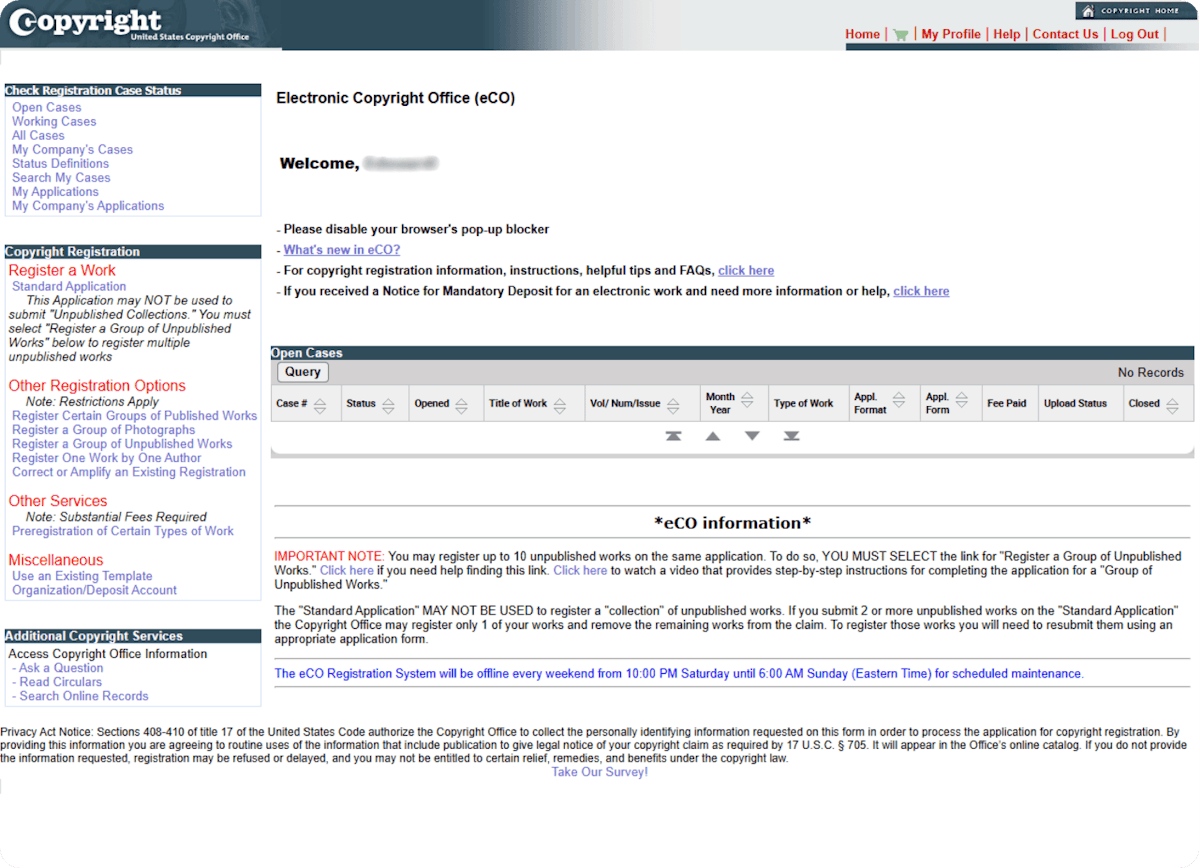
Electronic Copyright Office (eCO) portal
Where to do it
Go to the USCO Registration Portal and create an account on the Electronic Copyright Office (eCO) system. Filing online is faster and cheaper than mailing paper forms.
Choose the correct application type
When you start your application in the eCO Portal, you’ll need to select the Type of Work that best describes what you’re registering. This is a required step — and once you click “Continue,” you can’t change it later.
- PA (Performing Arts) Copyright: Covers the underlying composition — melody, harmony, lyrics. Needed by songwriters and composers.
- SR (Sound Recording) Copyright: Covers the actual recorded version — the master. Needed by artists, producers, and labels.
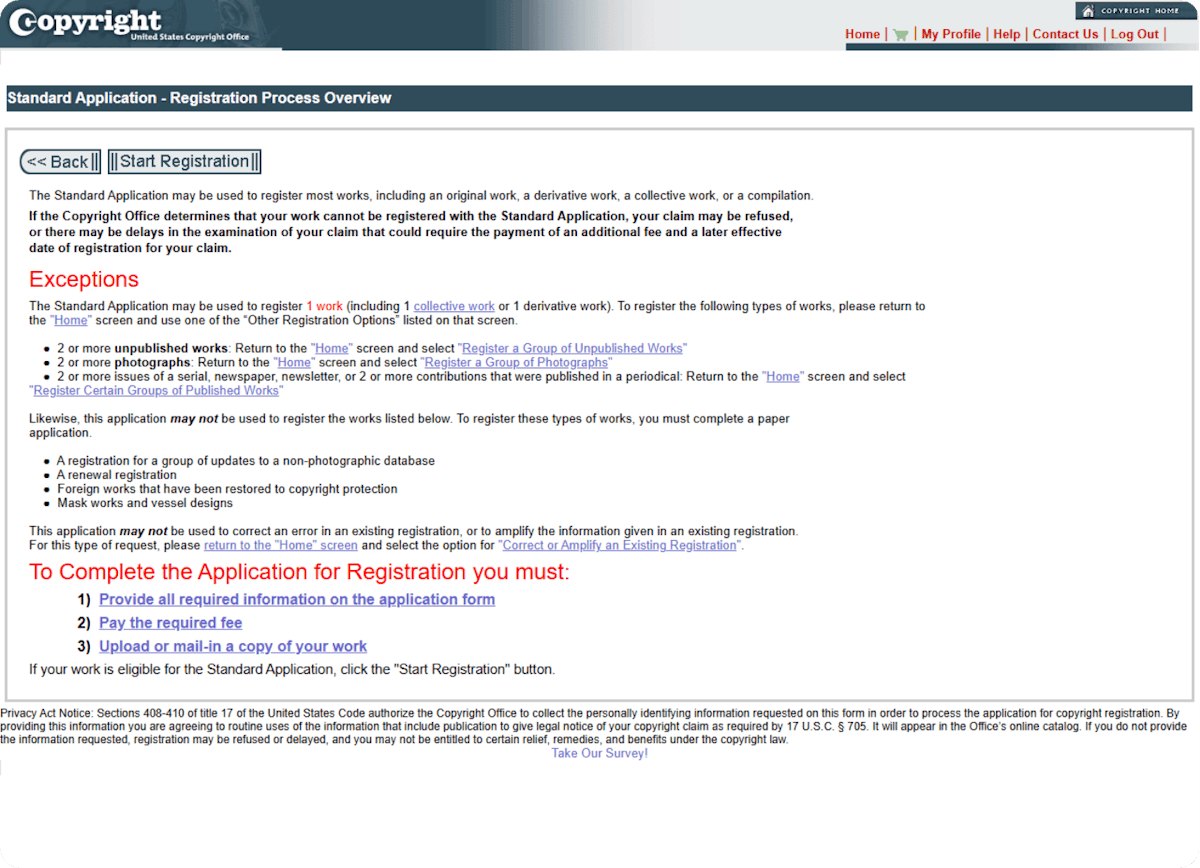
eCO Standard Application dashboard
Register a group of unpublished works
If you have multiple unpublished songs, you can register up to 10 in one application — but be sure to select “Register a Group of Unpublished Works” in the eCO Portal, not the Standard Application.
All works must be unpublished and created by the same author(s).
Key details to check
A small mistake on your application can create big headaches later. Double-check these fields:
- Title(s) of the work: Use exact spellings as they appear on your release.
- Authors & contributors: Include all songwriters and composers; clarify who owns which part.
- Year of creation & publication: Add the first publication date if your song is already out.
- Work for hire? If you hired session musicians or a producer, check if any part qualifies.
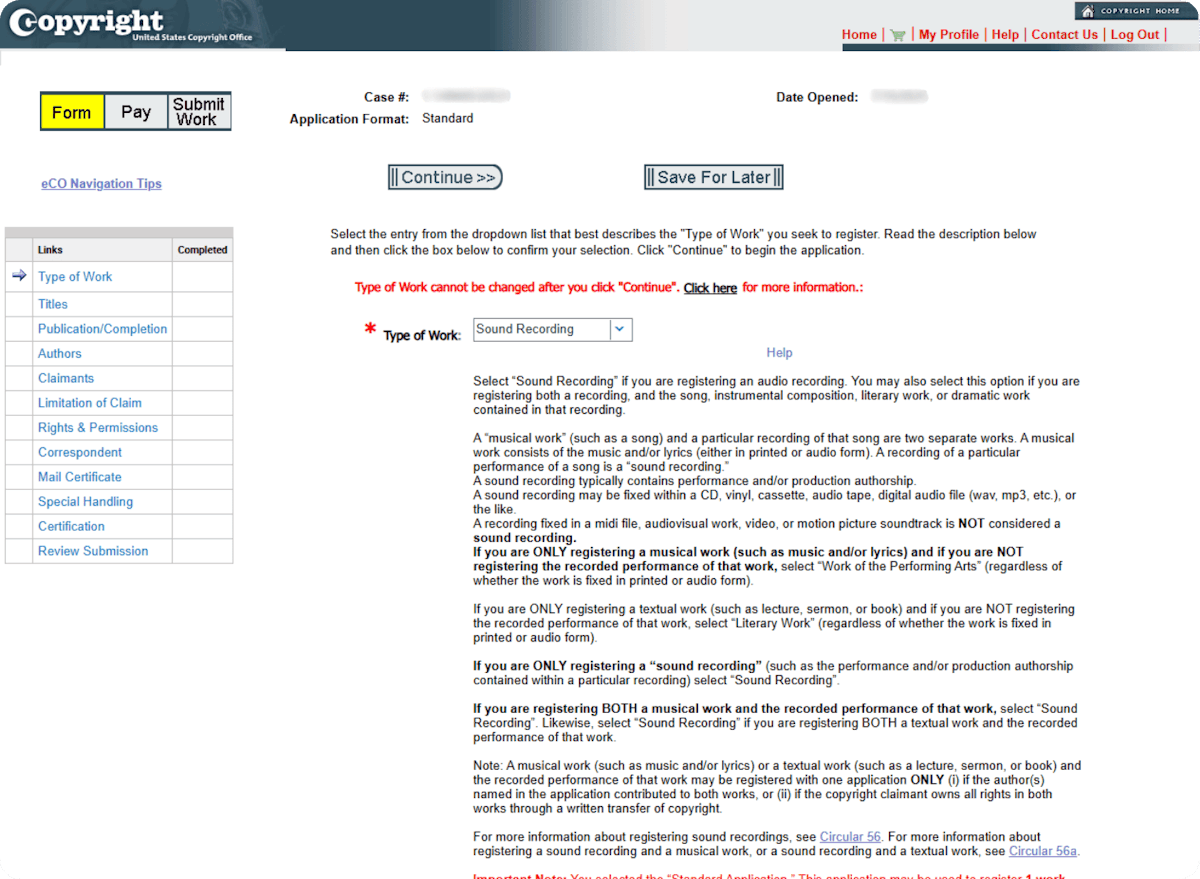
eCO Sound Recording (SR) Standard Application
Pro Tip: Always save a copy of your completed application for your records. Your effective registration date is when the Copyright Office receives your complete application, not when they approve it. So don’t wait too long after you release your music.
3. Pay the filing fee
Once you’ve completed your application, you’ll need to pay the filing fee to make it official.
This fee depends on how many works you’re registering and which type of application you choose, but expect to pay around $45–$65 for a single registration. We've detailed the prices in the next section.
You can pay directly through the USCO eCO Portal using a credit card, debit card, or electronic check (ACH).
Pro Tip: Keep your payment confirmation email and your eCO login details somewhere safe — they’re the fastest way to check your registration status or fix issues later.
4. Submit a copy of the work
The final step is to submit a copy of your work — called a deposit — to the US Copyright Office.
This deposit is your official proof of what you’re protecting. Without it, your registration won’t be processed.
When you file online, you’ll be prompted to upload your files directly in the eCO system.
- For a musical composition: submit a PDF of your sheet music, a lyric sheet, or a lead sheet.
- For a sound recording: upload an MP3 or WAV file of the final recording.
- For both: submit each version accordingly.
If you file by mail, you’ll send a physical copy (like a CD or printed sheet music) with your application barcode.
Most online applications are processed within 3–7 months, depending on the workload and whether your forms are complete.
Once your deposit is submitted, you’re done — you’ll get an email confirmation from the USCO. No need to wait for the certificate to release your music: your protection is effective as soon as they receive your complete submission.
How much does it cost to copyright my music?
The cost of registering your music copyright in the US depends on how many works you want to protect and how you file your application.
According to the US Copyright Office Fee Schedule, here’s what you can expect in 2025:
- Basic Single Registration — $45 per title
This is the most straightforward and most affordable option. It’s for one song, by one author, with the same claimant — and it’s not made for hire. Most independent artists who write and own their work fall into this category.
- Standard application — $65 per title
You'll need to file a standard application if your song involves multiple authors, if you are in a work-for-hire situation, or if you want to add extra details like co-writer splits. It’s also used for albums that have already been published.
- Group Registration — $85 total
If you have several new songs that haven’t been released yet, you can register up to 10 unpublished tracks at once. This is a popular way for artists to protect a batch of demos or an entire EP without paying for each song separately.
- Paper filing — $125 per title
Filing by mail is still possible, but is rarely recommended. It’s slower, costs more, and there’s no real benefit over doing it online.
Pro Tip: For unusual situations — like older recordings, databases, or anything outside a standard music release — you can check the full USCO Fee Schedule for all the details.
Can I copyright my music for free?
Technically, yes — copyright protection is automatic and free the moment your song is fixed in a tangible form (recorded, written down, or saved digitally).
That’s true in the US and in every country that follows the Berne Convention.
However, without official registration, you can’t enforce your rights in court, claim statutory damages, or create a public record of your ownership.
So while your music is protected the moment you create it, registering it isn’t free — it’s a small but essential investment if you want real legal protection.
Pro Tip: Forget the old myth of mailing a copy to yourself — the so-called “poor man’s copyright” doesn’t hold up in court. Always file an official registration if you want to protect your royalties.
Common mistakes to avoid (and how to avoid them)
Mistake #1 — Assuming uploading to streaming platforms protects you
Just putting your track on SoundCloud, Spotify, or TikTok doesn’t mean your copyright is officially registered — streaming platforms and distributors like CD Baby or DistroKid don’t handle legal copyright filings for you. Their job is to distribute your music, not to register your rights.
Instead, always file an official registration with the US Copyright Office to make your rights enforceable.
Mistake #2 — Believing in the "Poor Man's Copyright"
This old myth says you can mail a copy of your song in a sealed envelope and use the postmark as proof of ownership in court. In reality, courts rarely accept this as valid evidence — it doesn’t replace official registration, and the US Copyright Office does not recognize it.
Instead, register your music through copyright.gov. It’s the only way to secure absolute legal protection and access the full benefits of copyright law.
Mistake #3 — Missing the deadline for statutory damages
Many artists don’t realize that you can only claim statutory damages (and attorney’s fees) if you register your work before an infringement happens or within three months of publication. After that window, you may still sue, but you’re limited to actual damages, which are harder to prove and often much lower.
Instead, always register your work before you release it — or within three months of publishing it — to keep the door open for full legal remedies.
Mistake #4 — Overpaying when you could file as a group
If you’re registering multiple unpublished songs separately, you’re spending more than you need to. Group registration is designed for up to 10 unpublished works by the same author(s) — perfect for batches of demos, EPs, or an unreleased album.
Instead, use the group registration option to save money and simplify your paperwork.
Mistake #5 — Not monitoring where your song earns royalties
Many artists register a song and stop there, but you can’t protect what you don’t monitor. If you don’t know where your songs are being played — on streaming platforms or radio — you risk missing out on royalties you’re owed.
Instead, always track where your music generates income and how your PROs and publishers collect for you. Soundcharts is used by publishers and gives you real-time data on how your songs perform worldwide, so you never miss a spin or a payout.
Final thoughts
Copyright protection for your music starts automatically the moment your song is fixed — but real legal protection comes when you register it officially.
In the US, registration gives you the right to sue, claim statutory damages, and prove your ownership in court.
Always fix your work, choose the right application, file on time, and don’t leave royalties on the table.
Smart artists, publishers, and managers don’t stop at registration — they track where their songs earn money in real time.


